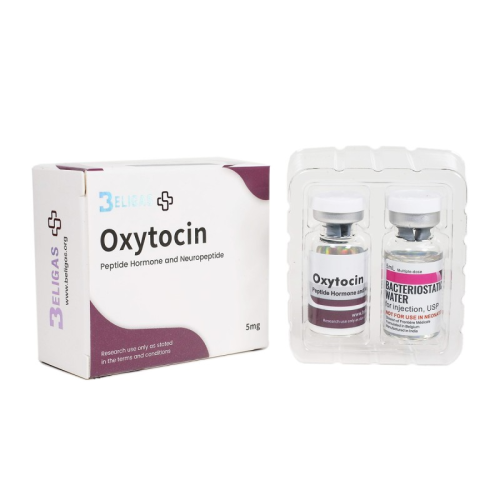ACNE
No
WATER RETENTION
No
HBR
No
HEPATOTOXICITY
No
AROMATIZATION
No
MANUFACTURER
Beligas
WAREHOUSE
International Warehouse 3
SUBSTANCE
Oxytocin
,
Oxytocin is a hormone produced by the posterior lobe of the pituitary gland, a small gland located at the base of the brain. Often referred to as the "cuddle hormone" or the "love hormone," it is released during social bonding and cuddling. According to a 2009 study published in the journal Hormones and Behavior, even activities like playing with a dog can trigger a release of oxytocin. However, these labels can be somewhat misleading.
Oxytocin can also amplify negative memories associated with bonding, such as in situations where men have difficult relationships with their mothers. It may cause individuals to be less accepting of those they perceive as outsiders. Thus, whether oxytocin induces feelings of warmth or suspicion can depend on the surrounding circumstances.
Oxytocin in Women
For women, oxytocin plays a crucial role. "Oxytocin is a peptide produced in the brain that was initially recognized for its function during childbirth and lactation," explains Larry Young, a behavioral neuroscientist at Emory University in Atlanta, Georgia. The hormone is responsible for stimulating uterine contractions during labor and aiding in the uterus's contraction after childbirth. When a baby breastfeeds, the resulting stimulation prompts the release of oxytocin, which signals the body to release milk.
Oxytocin also facilitates bonding between a mother and her child. Research indicates that "female rats are averse to pups if they have not given birth," Young told Live Science. "However, after giving birth, their brains undergo a transformation, making them find the pups attractive," he adds. Similar patterns are observed in humans.
A 2007 study published in Psychological Science found that higher oxytocin levels in pregnant women during the first trimester correlated with increased bonding behaviors, such as singing to or bathing their newborns. While maternal bonding may not always be instinctual—given that human females can adopt and nurture children—oxytocin released during pregnancy appears to contribute to the motivation and sense of connection to a baby, as noted by Young. Moreover, interactions with infants can elevate their own oxytocin levels.
Oxytocin in Men
In men, oxytocin also enhances bonding. A 2012 study revealed that fathers receiving oxytocin through a nasal spray engaged more closely with their 5-month-old babies compared to those who did not receive the hormone boost. It's worth noting that another hormone, vasopressin, has a more significant influence on men.
The sometimes anti-social implications of oxytocin present a more nuanced understanding of the hormone. In one study, Dutch participants who received a dose of oxytocin reported more positive feelings toward fictional Dutch characters while exhibiting more negative attitudes toward characters with Arab or German names. This suggests that oxytocin's bonding effects may be selective, focusing on individuals perceived as part of one’s in-group, as reported in a January 2011 study published in PNAS.
Additionally, research published in PNAS in 2010 found that men given oxytocin and asked to write about their mothers described them as more caring if they had secure relationships; conversely, those with troubled relationships viewed their mothers as less caring. The findings indicate that oxytocin may enhance the salience of social memories, strengthening existing positive or negative associations.
"My understanding of oxytocin's role in the brain is that it heightens the significance of social information," Young explained. "It links areas of the brain that process social stimuli—such as sights, sounds, and smells—to the brain's reward system."
Oxytocin Sprays and Side Effects
Oxytocin nasal sprays have also been explored as a potential treatment for autism, a condition characterized by challenges in social interaction. A small 2013 study published in PNAS involved administering oxytocin to children and teenagers with autism, who were then asked to recognize emotions from pictures of people's eyes. Although participants did not improve in emotion recognition post-treatment, the brain regions associated with social interactions showed increased activity. This suggests that oxytocin might enhance the effectiveness of behavioral therapy for children with autism, according to Young.
"When considering using oxytocin to treat conditions like autism, it's critical to ensure that the social context is positive," he cautioned.
However, the use of oxytocin sprays outside of medical settings is less clear. Online products marketed without prescriptions claim to relieve stress and enhance social interactions, but they lack regulation by the Food and Drug Administration (FDA). As a result, their effectiveness, side effects, and the accuracy of their ingredient content remain unknown.
Currently, there are no long-term studies assessing the side effects of legitimate oxytocin sprays used in research; most investigations involve a single dosage of the hormone. Pitocin, a synthetic form of oxytocin given intravenously to induce labor, can have side effects, including nausea, vomiting, and abdominal pain.

